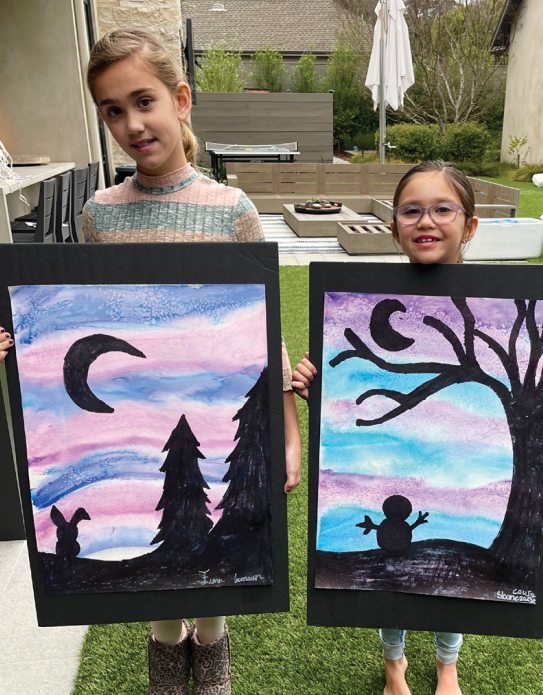Two Awesome Projects with two awesome sisters
Guest Artists: Fiona Courneen, age 9 & Sloane Courneen, age 7

Set up is important. We did these projects outside for easy clean up. Cover tables, have soft rags to mop up spills, dry hands, etc. With any art project, prep and set up is crucial to a happy experience.
Giving children media choices and options helps them decide where their strengths are. Working creatively develops emotional and intellectual intelligence and self expression. In this article you, as a parent, can decide with your child what media you want to do first, pick a theme and let the magic begin.
Pastel on black paper
You can buy pastel paper in soft tones as well as black. Pastel dries richer on colored paper and dries brilliant on black paper. Fiona’s theme is Northern Lights, but you can imagine this project done with a spring, summer, or fall theme. Sketch out an idea first on another paper. Referring to your sketch, outline on the black paper using a soft dark pencil or a light opaque marker. Leave areas of the black paper showing. Do not use black pastel until the very end. Start with white or your lightest colors. Leave areas off the background empty— just the black paper showing will provide a beautiful rich background. Do not rub the pastel into the paper—leave it and if you want the color more intense, add a light or dark of the same color. If powder from the chalk/pastel accumulates, take the paper to a garbage can and shake into the garbage.
When finished, clean up dusty areas with damp cloth and to set pastel you can mist lightly with an aerosol inexpensive hair spray or buy a professional fixative. Do not get the pastel wet.
Watercolor Silhouette Art Using salt
There is nothing more exciting than children watching brilliant colors mix together before their eyes and having the freedom to use different media to create a masterpiece.
The girls sketched the outline of the silhouette on the white watercolor paper first. You can also make a paper pattern and trace around it on the water color paper.